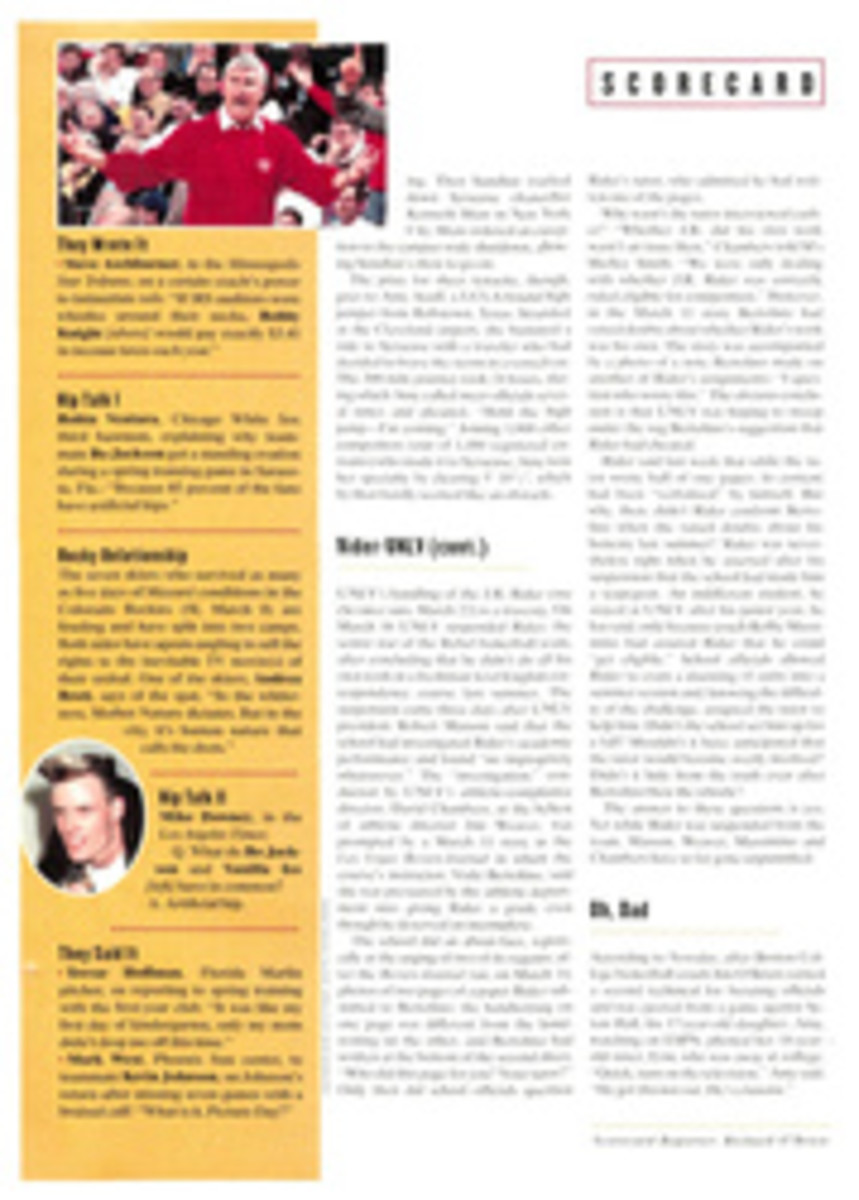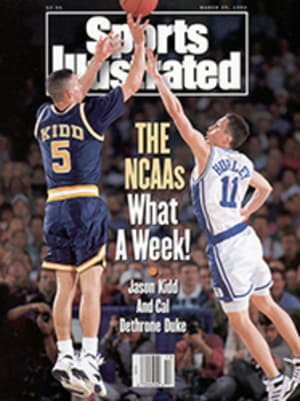
Ordinary People
They were not merely teenage boys, they were athletes. They were not merely athletes, they were football stars. They were not merely stars, they were heroes. Step by step, their prowess in sports delivered them from the constraints of conscience and morality until finally they answered only to themselves and were free to gather in a basement one day after school and violate a retarded girl with a broomstick and a fungo bat.
That is the Glen Ridge story, isn't it? At least, that's what the newspaper and television reports have told us for the last four years: that the tale of the teenagers from Glen Ridge. N.J., who collaborated in the rape and humiliation of a young woman with an IQ of 64, is, in its essence, a story about sports. It was sports that united them, elevated them and attached them to the burgeoning roster of college and professional athletes who have turned esprit de corps into a pretext for sexual misconduct and gang violence. There were 13 boys in the basement that March afternoon in 1989; last week, when a jury convicted three of them of aggravated sexual assault and another of conspiracy. The New York Times offered the headline HIGH SCHOOL STARS NOW FACE LONG PRISON TERMS and suggested that the assault could be seen as "an immoral outgrowth of community worship of high-school athletics."
I wish the Glen Ridge story were a sports story. I wish it were that simple. In the fall of 1990 I spent 20 days in Glen Ridge, trying to construe what happened in the basement as an extension of what happens on the playing field, trying to figure how something as ostensibly pristine as sports could inspire something as perverse as a sexual assault with blunt instruments. I failed. I failed because, quite simply, I could not fashion the boys, as they were known then—they are men now, and on April 23 will be sentenced as men—into stars and heroes, and therefore I could not render the attack as the outcome of athletic excellence. Stars? Heroes? They were small-time jocks, marginal talents who would have been hard-pressed to make the cut in towns larger than Glen Ridge, population 7,000. Unruly and undisciplined since grade school, they had struggled in the classroom, with the notable exception of Christopher Archer, the honor student whom the jury deemed the assault's "mastermind." Their football team had won one game in 1987 and two games, one by forfeit, in 1988. When victory was out of reach, Kyle Scherzer, the quarterback, who, with his twin brother, Kevin, supplied the basement in which the rape occurred, would occasionally throw intentional interceptions because, as he told a friend, he preferred playing defense. They performed in front of small crowds, mostly family members and friends and those who had come out to cheer the Glen Ridge High band.
I have not experienced any days as a reporter more dispiriting than my days in Glen Ridge. The town was closed like a fist: If people agreed to talk to me, they didn't know the boys: if they knew the boys, they didn't talk. I do remember speaking to one woman, a family friend of the Scherzers', who after denying me an interview with an operatic flourish—"I would rather cut out my tongue than talk to you"—allowed that she was worried about the decline of values in Glen Ridge. She was not speaking of the Scherzers. She was speaking of the "new people," the outsiders who took the train to Manhattan in the morning and returned at night and did not participate in the life of the town. The Scherzers were not new people. Kevin and Kyle's parents, she said, were "the diehards," who could be counted on to show up at every game and potluck supper, and the twins themselves were merely the latest members of a family that had populated the playing fields of Glen Ridge for the better part of 10 years. They were "typical." she said, they were "ordinary," and what she wanted me to understand was that athletics are important in Glen Ridge simply because in Glen Ridge nearly everyone is an athlete. The town is small, and there is little else to do. People like her and the Scherzers did not worship athletes—the athletes were their sons.
The victim of the attack, though not one of the "new people," was certainly an outsider. To a shocking extent, those who counted themselves among the "diehards" despised her and spoke of her as some kind of succubus, with unknowable needs and unfathomable wants. "And to think of all the times I gave that girl a ride in my car!" said one Glen Ridge woman. The girl was not typical, and she was not ordinary, and for such offenses she paid dearly. The boys had known her a long time, and they knew how to treat her. They gave her dog feces to eat when they were children, and they gave her a bat and a broomstick when they were on the verge of becoming adults. They called her a whore, and in the aftermath of the assault, they told their friends that they were not turned on by her but, rather, repulsed. They chose the bat not to make any symbolic statement as athletes but simply because it was available and they did not wish to touch her.
Some might embrace the notion that the boys descended the stairs of the basement because they had already ascended into remote echelons of athletic achievement, where there seem to be no boundaries for behavior. In 1990, however, I listened to people defend the boys as ordinary kids, and they were right. In Glen Ridge, spoils are conducted on a modest scale, as an extension of family and a statement of unity, and the boys who play them wind up expressing, rather than transgressing, the values of their community.
PHOTO
JIM GUND

